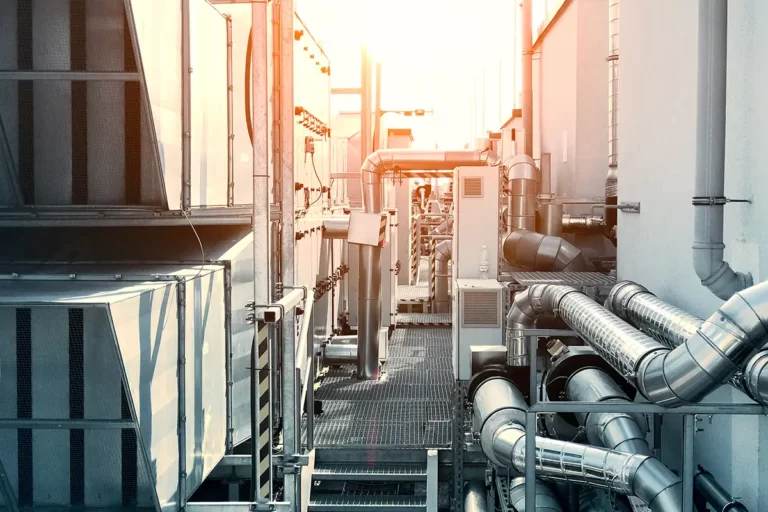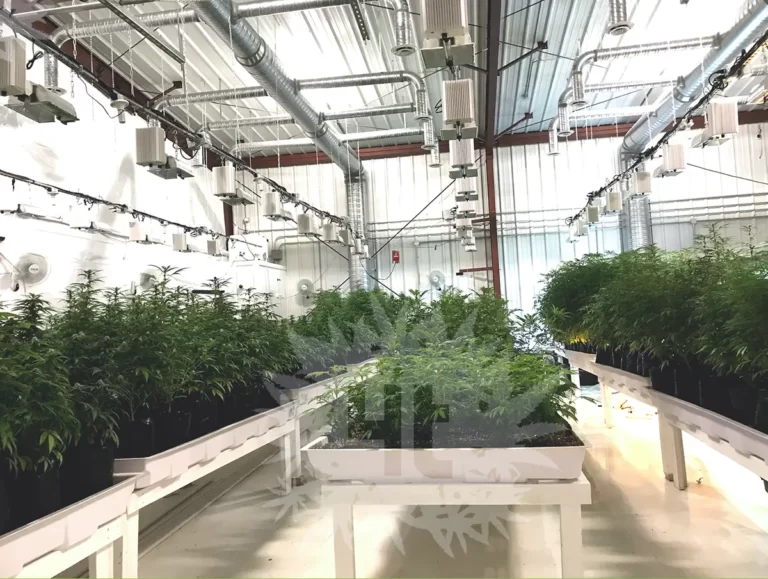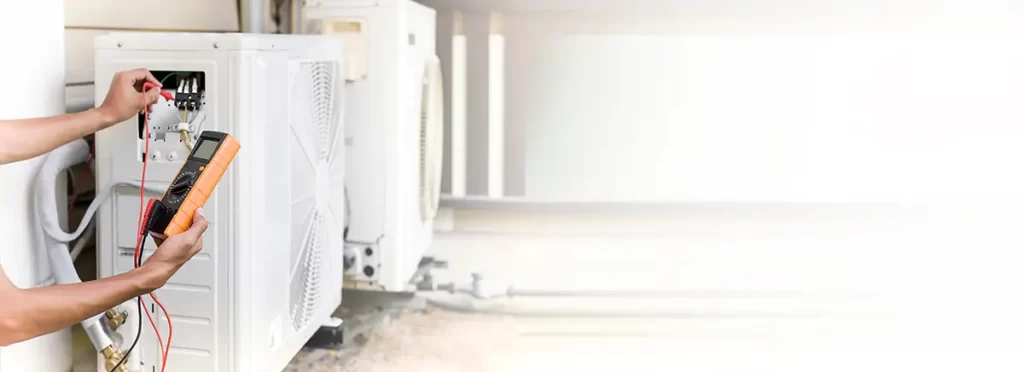Choosing The Best HVAC System for Cultivation
Choosing the right HVAC systems is crucial to your success in your new cultivation facility. While cooling the air is the goal for most systems, they all do it in various ways, and some that can be a hinder to your operation. Below we will discuss some of the best air conditioning units for commercial cannabis production.
Here at 4trees Cannabis Building its part of our job to implement the best HVAC or HVACD systems in to your new grow facility design. Part of this systems engineering involves setting up the right type of cooling units in your operation. Most HVAC technicians will only be familiar with how to design a system for homes and businesses as that is the majority of their workload. However, grow facilities are much different and require certain types of units depending on their size.
Regardless of the system type, or size of grow room its ideal to go with a sealed, closed-loop style system. This is important so that you don’t take air out of your growing or drying space, or introduce contaminated air from outside. Your air within the growing spaces will be saturated to the perfect levels of c02, purified, cooled or heated and the humidity will be controlled. If your HVAC system does not operate on a close-loop style function then it is robbing your room of c02, and potentially introducing bugs or molds.

What is VRF HVAC?
VRF (Variable Refrigerant Flow) HVAC systems, also known as VRV (Variable Refrigerant Volume) systems, are air conditioning systems that use a refrigerant to provide both heating and cooling to a building. These systems are commonly used in commercial buildings but can also be found in some residential applications.
The basic idea behind VRF systems is to use less outdoor units, which are connected to multiple indoor units through a network of refrigerant lines. Each indoor unit can be individually controlled, allowing for precise temperature control in different areas of the building.
Here’s how the system works:
- Outdoor unit: The outdoor unit contains a compressor that pumps refrigerant through the system. It also houses a heat exchanger that dissipates the heat collected from the building.
- Indoor units: Each indoor unit contains a heat exchanger, which is responsible for either heating or cooling the air that passes through it. The indoor units are typically mounted on walls, ceilings or floors, depending on the design of the building.
- Refrigerant lines: The refrigerant lines connect the outdoor unit to the indoor units. These lines carry the refrigerant between the two units, allowing for heat exchange to occur.
- Control system: The control system allows users to adjust the temperature in each zone, as well as monitor the overall performance of the system. This system also ensures that the appropriate amount of refrigerant is delivered to each indoor unit, based on the desired temperature settings.
VRF systems are energy efficient because they use a variable-speed compressor that can adjust its output to match the heating or cooling demands of each zone. This allows the system to operate at a lower capacity when only a few zones need conditioning, resulting in lower energy consumption and reduced operating costs.
VRF HVAC systems offer excellent performance, energy efficiency, and flexibility, making them a popular choice for commercial cultivation facilities.

To Duct, or Not to Duct?
Going ductless with AC units in a cannabis cultivation facility can be ideal for several reasons, including:
- Energy efficiency: Ductless systems are highly energy efficient, especially when compared to traditional HVAC systems that use ductwork. Because they don’t require ducts to move air around, there’s no energy loss associated with air leakage, which can occur when ducts are not properly sealed or insulated. This means that ductless systems can be more cost-effective to operate, especially in large facilities where energy costs can be significant.
- Temperature control: Cannabis plants require specific temperature and humidity levels for optimal growth, and ductless systems can provide precise temperature control in different areas of the facility. This is because ductless systems allow for individual control of each indoor unit, which means that different zones can be set to different temperatures and humidity levels, depending on the needs of the plants.
- Flexibility: Ductless systems can be easier to install and modify than traditional HVAC systems, especially in large facilities where there may be limited space for ductwork. This means that ductless systems can be more flexible and adaptable to the changing needs of a cannabis cultivation operation.
- Air quality: Ductless systems can improve indoor air quality because they don’t rely on ducts to move air around. Ductwork can accumulate dust, mold, and other pollutants over time, which can reduce indoor air quality and potentially harm the plants. With ductless systems, the air is delivered directly from the indoor unit, which can help to maintain a clean and healthy indoor environment for the cannabis plants.
- Molds & pests: When going ductless you reduce the possibility of introducing molds and pests into your grow space by bringing in outside air
- C02 loss: Cannabis required the saturation of added c02 within your grow space to increase growth rates. When your system is ductless you spend over 80% less on c02 costs.

Is VRF The Best Choice For Your Cannabis Cultivation Facility?
VRF HVAC systems can be a good choice for large cannabis cultivation facilities, but it ultimately depends on the specific needs of the facility and the preferences of the operators.
The general rule we have is that if you have over 100 800w – 1,000w LED grow lights or more than 50 1,000w HPS grow lights then you should consider a VRF system.
Here are some factors to consider:
- Temperature and humidity control: Cannabis plants require specific temperature and humidity levels for optimal growth, and VRF systems can provide precise temperature control in different areas of the facility. However, depending on the climate and other factors, it may be more appropriate to use a different type of HVAC system that is better suited to the specific needs of the cultivation operation.
- Energy efficiency: VRF systems can be very energy efficient because they allow for individual control of each indoor unit, but the cost of operating the system will depend on a variety of factors, including the size of the facility and the local energy prices.
- Cost: VRF systems can be more expensive to install than other types of HVAC systems, but they may be more cost-effective in the long run due to their energy efficiency and the ability to provide precise temperature control.
- Maintenance: VRF systems require regular maintenance to ensure that they are functioning properly, and the cost of maintenance will depend on the size of the facility and the specific components of the system.
Overall, VRF HVAC systems can be a good choice for large cannabis cultivation facilities, but it’s important to carefully evaluate the specific needs of the facility and consider other HVAC options as well. Consulting with a HVAC professional who has experience working with cannabis facilities can be helpful in determining the best system for the operation.
Top 3 Commercial Cultivation VRF HVAC Units
When it comes to choosing the best ductless HVAC system for large-scale indoor cannabis cultivation facilities, there are a few factors to consider, such as energy efficiency, temperature and humidity control, ease of maintenance, and cost-effectiveness. Here are three popular ductless HVAC systems that can be suitable for large cannabis cultivation facilities:
- Mitsubishi Electric VRF (Variable Refrigerant Flow) Zoned Comfort Solutions: This system provides efficient and flexible heating and cooling to different zones of a building. It can be tailored to fit the specific needs of a facility and offers individual control of each indoor unit. It’s also known for its quiet operation, which can be important in a cannabis cultivation facility.
- LG Multi V 5: This VRF system uses advanced technologies to deliver efficient and consistent temperature control, with individual control of each indoor unit. It also offers high reliability, ease of installation, and maintenance.
- Daikin VRV (Variable Refrigerant Volume) IV-S: This system is designed to provide energy-efficient heating and cooling to different zones of a facility, with the ability to control temperature and humidity levels. It can also be tailored to fit the specific needs of a cannabis cultivation facility and offers low maintenance requirements.

What Are Multi-Split, or Mini-Splits?
Ductless wall or cassette style air conditioning units, also known as mini-split systems, can be a great option for regulating the temperature and humidity levels in medium to small sized cannabis grow rooms. These units are efficient and can help maintain a consistent environment for your plants, which is crucial for their growth and health.
Below are some features of mini-split systems:
- Cooling capacity: It is important to choose a unit with sufficient cooling capacity to match the size of your grow room. A unit that is too small may not effectively cool the space, while a unit that is too large may waste energy and increase your electricity bills. Consider the square footage of your grow room and look for a unit with a cooling capacity that matches your needs.
- Energy efficiency: Mini-splits can minimize your electricity costs and reduce your carbon footprint. Units with higher SEER (Seasonal Energy Efficiency Ratio) ratings are more efficient and may qualify for energy rebates.
- Noise level: The noise level of an air conditioning unit can be a concern for cannabis growers, as excessive noise can attract unwanted attention. Look for a unit with a low noise level, or consider adding noise-reducing features such as sound blankets or vibration isolators if this is an issue for you.
- Ease of installation: Ductless wall air conditioning units are typically easier to install than central air systems, but it is still important to consider the complexity of the installation process. Look for a unit with clear installation instructions and consider hiring a professional if you are not comfortable with DIY installation.

Leading Mini-Split Suppliers For Cannabis Cultivation
Being international grow room planners we are well versed with different parts of the world offering different suppliers. Although there are many brands, or branches of brands under different names these are the leading mini-split suppliers for cannabis cultivation in North America.
Mitsubishi Electric: Mitsubishi Electric offers a variety of mini-split AC units suitable for cannabis growing, such as the M-Series and P-Series. These units are known for their energy efficiency, quiet operation, and advanced filtration systems.
Fujitsu: Fujitsu’s Halcyon series offers high-efficiency mini-split AC units with features such as humidity control, heating, and air filtration. These units are known for their reliability, quiet operation, and sleek design.
Daikin: Daikin offers a variety of mini-split AC units suitable for cannabis growing, such as the Emura and Quaternity series. These units are known for their energy efficiency, quiet operation, and advanced air purification systems.
What Are Cassette-Style Ductless Units?
Cassette-style ductless AC units are a popular choice for commercial cannabis cultivation spaces. If the grow rooms BTU rating exceeds recommended application for these, they will still often be used in the service corridors, lunchroom and elsewhere in the cultivation facility. These units are designed to be installed in the ceiling, with the air flow distributed through a cassette-like panel that blends seamlessly with the ceiling tiles. Cassette-style units offer efficient and quiet cooling, as well as advanced features such as multi-zone cooling and heating, humidity control, and air filtration. With their discreet design and powerful cooling capabilities, cassette-style ductless AC units are a great option for those looking for a sleek and efficient cooling solution to help maintain a clean hygienic GPP or GMP profile within their grow facility.
Free HVAC Video Consultation
Ultimately, the best ductless HVAC system for a large cannabis cultivation facility will depend on the specific needs and requirements of the operation, such as the size of the facility, the local climate, and the desired indoor environment for cannabis growth. Consulting with an HVAC professional combined with an expert from 4trees Cannabis Building will be your best way to ensure the proper units for your new facility.

